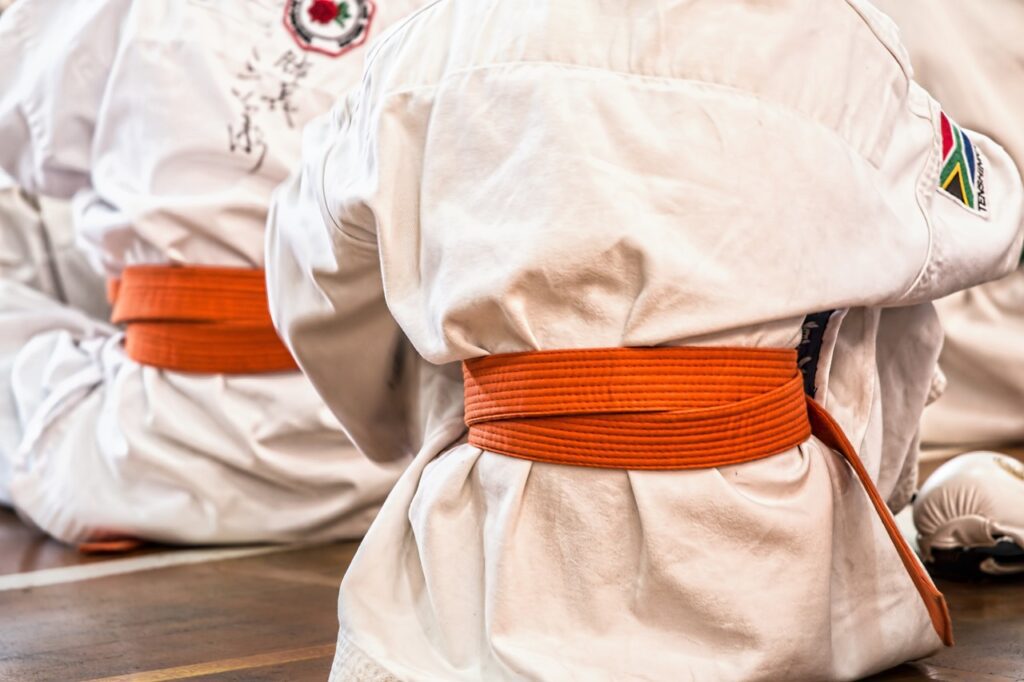In this article, you will discover some advanced techniques that can help you effectively defend against liver shots, a devastating strike that can leave you crumpled on the floor in pain. It’s no secret that a well-placed liver shot can be one of the most crippling attacks in combat sports, but fear not! By understanding these advanced defense strategies, you will be better equipped to protect yourself and turn the tables on your opponent. So, prepare to strengthen your guard and learn the secrets to ward off those painful liver shots with finesse and skill.

Proper Guard Position
High Guard
In boxing, maintaining a proper guard position is crucial to protect yourself from your opponent’s punches. The high guard is one of the most effective positions to defend against liver shots. To execute the high guard, bring both of your hands up to cover your head and chin. Your elbows should be tucked in, protecting your body from any incoming strikes. Make sure to keep your shoulders relaxed, allowing for fluid movement while staying well-protected.
Low Guard
Another effective guard position to defend against liver shots is the low guard. Instead of keeping your hands up near your head, the low guard involves placing your lead hand down near your waist, shielding your midsection. Your rear hand is still up near your face to protect your chin. By utilizing the low guard, you create a barrier that makes it difficult for your opponent to target your liver.
Forearm Guard
The forearm guard is a defensive technique that provides extra protection for your liver. To execute this guard, raise your forearm in front of your midsection, positioning it horizontally across your torso. This positioning serves as a barrier, effectively blocking any liver shot attempts. The forearm guard is particularly useful against opponents who have a tendency to target the liver, allowing you to neutralize their attacks and maintain control in the ring.
Footwork Techniques
Lateral Movement
Lateral movement is an essential footwork technique that can help you defend against liver shots effectively. By constantly shifting side to side, you make it challenging for your opponent to land a clean shot to your liver. This movement also allows you to control the distance between you and your opponent, making it harder for them to find openings for liver shots.
Angling
Angling is another footwork technique that can be highly effective in defending against liver shots. By stepping off at an angle, you create a better defensive position and make it harder for your opponent to land a solid liver shot. Angling helps you create opportunities for counter-attacks while simultaneously avoiding any incoming strikes.
In-and-Out Movement
In-and-out movement is a footwork technique commonly used in boxing to control the distance between you and your opponent. By quickly moving in and out, you keep your opponent guessing and make it difficult for them to accurately target your liver. This movement pattern allows you to counter-attack effectively while evading any potential liver shots.
Body Conditioning
Strengthening the Abs
Strong abdominal muscles are essential for effective liver shot defense. Incorporating exercises that target your core muscles, such as planks, Russian twists, and leg raises, can significantly strengthen your abs. Consistent training of these muscles will provide you with the stability and endurance required to defend against liver shots more effectively.
Utilizing Medicine Balls
Working with medicine balls can be a beneficial addition to your liver shot defense training routine. By performing exercises such as medicine ball slams and rotational throws, you can enhance your core strength and improve your ability to absorb and deflect liver shots. These dynamic movements engage your entire body, ensuring you are well-prepared to defend against liver shots.
Core Workout Routine
Developing a comprehensive core workout routine is crucial for effective defense against liver shots. Incorporate exercises such as planks, sit-ups, Russian twists, and bicycle crunches into your training regimen. By consistently working on your core strength, you will be better equipped to withstand and neutralize any liver shots that come your way.
Defensive Techniques
Slipping Punches
Slipping punches is a fundamental defensive technique that is particularly useful when defending against liver shots. By quickly moving your head to the left or right while minimizing body movement, you can dodge your opponent’s punches and avoid any liver shots. It is essential to practice this technique regularly to maintain a strong defensive stance and effectively defend against liver shots.
Blocking with Elbows
Using your elbows to block liver shots can be a highly effective defensive technique. Bring your elbows down to cover your sides, protecting your liver from your opponent’s punches. Ensure that your elbows stay close to your body, creating a sturdy barrier against any potential liver shots. Practice this technique with a focus on maintaining proper form and balance to effectively defend against liver shots.
Parrying
Parrying is a defensive maneuver where you use your lead hand to redirect your opponent’s punches and nullify their attack. To parry against liver shots, use your lead hand to redirect the incoming punch away from your liver. This technique requires precision and timing, so practice it regularly to develop the necessary skills for effectively defending against liver shots.

Counter-Attacking Strategies
Using Liver Shot as a Bait
One effective counter-attacking strategy against liver shots is to use it as bait. By leaving a deliberate opening for your opponent to target your liver, you can lure them into throwing a punch. As they commit to the liver shot, quickly counter-attack with a well-timed punch to a vulnerable area, such as the head or ribs. This strategy requires careful timing and execution but can catch your opponent off guard and give you the upper hand.
Delivering a Timely Hook Counter
A well-timed hook counter can be an effective counter-attacking strategy against liver shots. As your opponent attempts a liver shot, quickly pivot on your lead foot and throw a powerful hook counter to their head. The element of surprise, combined with precision and speed, can result in a devastating counter-attack while effectively defending against liver shots.
Employing the Liver Shot as a Distraction
Using the liver shot as a distraction is a strategic counter-attacking technique. As your opponent positions themselves for a liver shot, seize the opportunity to distract them by launching an unexpected attack to another vulnerable area, such as the head or chin. By capitalizing on their focus on the liver shot, you can catch them off guard and effectively defend against liver shots while launching a potent counter-attack.
Sparring Drills
Focus on Defense
Incorporating sparring drills that focus on defense is essential to improve your ability to defend against liver shots effectively. Practice defensive maneuvers such as slipping punches, blocking with elbows, and parrying while maintaining a strong guard. By regularly engaging in drills that emphasize defensive techniques, you will develop the necessary reflexes and instincts needed to effectively defend against liver shots during actual fights.
Active Counter-Punching
Sparring drills that incorporate active counter-punching can significantly enhance your ability to defend against liver shots while taking advantage of opportunities to counter-attack. Focus on maintaining a solid defense while looking for openings to deliver powerful counter-punches. By honing your defensive skills and actively looking for counter-attacking opportunities, you will become a formidable opponent in the ring.
Positional Awareness
Developing positional awareness through sparring drills is essential for effective defense against liver shots. Focus on maintaining optimal positioning, footwork, and guard while understanding your opponent’s movements in the ring. By consistently practicing drills that improve your positional awareness, you will be better prepared to defend against liver shots and react strategically to your opponent’s attacks.

Mental Preparation
Visualizing and Reacting
Mental preparation plays a crucial role in effectively defending against liver shots. Visualizing different scenarios and mentally rehearsing defensive techniques helps condition your mind to react quickly and instinctively. Visualize your opponent’s punches, specifically targeting your liver, and envision yourself successfully defending against those shots. By consistently practicing this mental exercise, you will develop a heightened ability to react and defend against liver shots.
Building Mental Toughness
Defending against liver shots requires mental toughness. Strengthen your mental resilience by pushing yourself during training and embracing challenges. Develop a mindset that allows you to stay focused, composed, and determined even in the face of adversity. By cultivating mental toughness, you will be better equipped to defend against liver shots and maintain control over your performance in the ring.
Developing Ring IQ
Enhancing your ring intelligence, commonly known as Ring IQ, is essential for effective liver shot defense. Study your opponents, analyze their fighting styles, and identify their tendencies, including their favorite liver shot setups. By developing a comprehensive understanding of your opponents, you can anticipate their attacks and adjust your defense accordingly. Building your Ring IQ will significantly elevate your ability to defend against liver shots successfully.
Mastering Defensive Maneuvers
Slipping and Rolling
Mastering slipping and rolling techniques is crucial for advanced liver shot defense. These defensive maneuvers involve moving your head and upper body in a controlled manner to evade punches. Slipping refers to moving your head left or right to dodge straight punches, while rolling involves rotating your upper body to avoid hooks. By consistently practicing and refining these techniques, you will become more adept at defending against liver shots effectively.
Clinching Techniques
Clinching, or close-range grappling, can be a valuable defensive maneuver to neutralize liver shot attempts. By tying up your opponent’s arms and effectively controlling the distance between you, you limit their ability to target your liver. Familiarize yourself with various clinching techniques, such as the double-collar tie or underhooks, to effectively defend against attacks targeting your liver.
Creating Distance
Creating distance is a defensive tactic that involves moving away from your opponent to avoid their attacks, including liver shots. By using footwork to establish space between you and your opponent, you limit their ability to land accurate punches to your liver. Creating distance also provides you with an opportunity to reposition, assess the situation, and effectively counter-attack. Practice footwork drills that focus on quickly creating distance to enhance your ability to defend against liver shots.
Effective Clinching Techniques
Controlling the Opponent’s Hands
When clinching, effectively controlling your opponent’s hands can give you an advantage in defending against liver shots. Use techniques such as overhooks or wrist control to restrict their ability to throw punches or target your liver. By controlling their hands, you limit their offensive options and create opportunities to launch your own counters.
Utilizing Knees and Elbows
In clinching situations, incorporating knees and elbows can be effective in defending against liver shots. Throw quick knee strikes to your opponent’s midsection or target their liver with well-placed elbows while maintaining control in the clinch. Utilizing these strikes can deter your opponent from attempting liver shots while giving you the opportunity to inflict damage.
Maintaining Balance and Dominance
Maintaining balance and dominance during clinching is crucial for effective liver shot defense. Focus on positioning yourself in a way that allows you to control the clinch and dictate the pace. By maintaining a solid base, utilizing proper footwork, and using underhooks or overhooks, you can establish dominance in the clinch and effectively defend against any attempts to target your liver.
Strategic Tactics for Liver Shot Defense
Observing Opponent’s Patterns
To effectively defend against liver shots, pay close attention to your opponent’s patterns and tendencies. Observe their footwork, combinations, and punching angles to identify situations where they are most likely to target your liver. By recognizing these patterns, you can anticipate their attacks and implement appropriate defensive measures to thwart their offense.
Identifying Weaknesses
Analyzing your opponent’s weaknesses can provide valuable insights into their liver shot defense strategies. Identify areas where they are susceptible to counter-attacks or where their guard may be lacking. By exploiting these weaknesses, you can effectively defend against liver shots and create opportunities for your own offensive maneuvers.
Capitalizing on Counter-Attacks
Defending against liver shots presents an opportunity for well-executed counter-attacks. By accurately reading your opponent’s liver shot attempts, you can counter with swift and powerful strikes to vulnerable areas. Timing is crucial in capitalizing on counter-attacks, so practice combining defensive maneuvers and counter-attacks to effectively defend against liver shots while taking advantage of strategic openings.
In conclusion, defending against liver shots requires a combination of proper guard position, footwork techniques, body conditioning, defensive maneuvers, counter-attacking strategies, sparring drills, mental preparation, and mastering defensive maneuvers and clinching techniques. By incorporating these advanced defensive strategies into your training regimen, you will enhance your ability to effectively defend against liver shots and ensure a strong performance in the ring. Stay focused, keep practicing, and remain resilient as you continue to improve your liver shot defense skills. Happy training!

